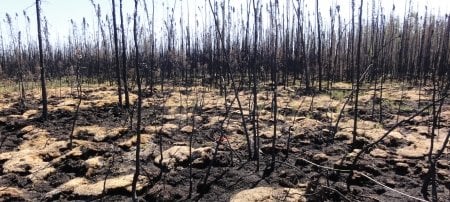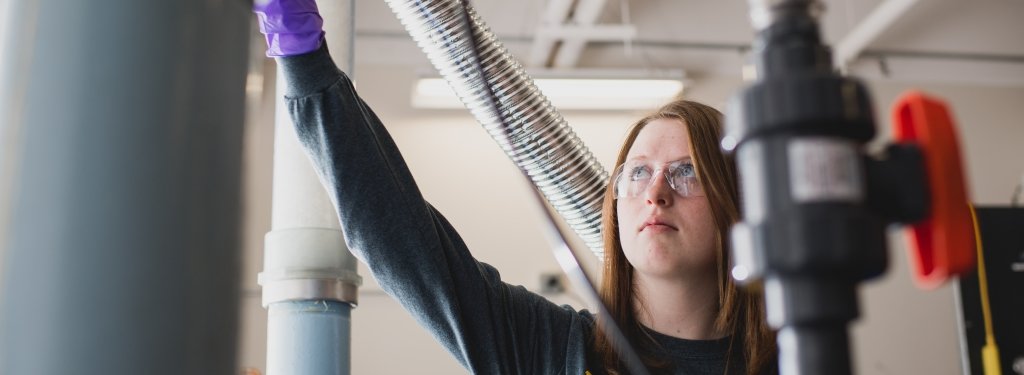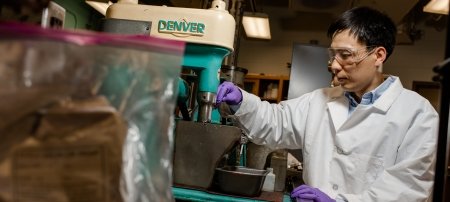Frequent, Severe Fires Turn Alaskan Forests into a Carbon Production Line

Alaskan forests used to be important players in Mother Nature’s game plan for regulating carbon dioxide levels in the air. It’s elementary earth science: Trees take up carbon dioxide and give off oxygen.
But now, American and Canadian researchers report that climate change is causing wildfires to burn larger swaths of Alaskan trees and to char the groundcover more severely, turning the black spruce forests of Alaska from repositories of carbon to generators of it. And the more carbon dioxide they release, the greater impact that may have in turn on future climate change.
“Since the proliferation of black spruce, Alaskan soils have acted as huge carbon sinks,” says Evan Kane, a research assistant professor in Michigan Technological University’s School of Forest Resources and Environmental Science. “But with more frequent and more extensive burning in recent decades, these forests now lose more carbon in any fire event than they have historically been able to take up between fires.”
Kane is co-author on a paper published in the January 2011 issue of the journal Nature Geoscience. Lead author on the research study titled “Recent Acceleration of Biomass Burning and Carbon Losses in Alaskan Forests and Peatlands” is Merritt R. Turetsky of the University of Guelph, Ontario.
The overall impact of burning northern forests depends on both the frequency and severity of the fires, the researchers note. A majority of the carbon in these forests is stored in the layers of moss, peat and leaf litter that cover the ground, and those are the layers most likely to burn in forest fires.
This burning not only releases carbon emissions, but the loss of that ground layer affects a number of natural processes, such as regulation of soil climate, maintenance of permafrost and the kinds of trees that can grow back. The new forest types likely to establish after repeated severe fires act as a much weaker carbon sink than black spruce forests.
During their study, Kane and colleagues collected data on the depth of ground-layer combustion in 31 Alaskan black spruce forest and peatland fires at 178 sites. Black spruce forests cover two-thirds of all woodlands in the interior of Alaska.
They found that when larger areas burned, the severity of the damage—measured by the depth of burning—was high throughout the fire season. Also, the carbon emissions were greater. In fact, the researchers found that the annual carbon losses from forest fires in 2000 to 2009 were more than twice the carbon lost during each of the previous five decades.
Climate change is an undeniable fact in the Arctic, where Arctic sea ice in January 2011 covered 5.23 million square miles, the lowest January ice measurement since satellite records began in 1979, and air temperatures over much of the Arctic were 4 to 11 degrees above average. These climate conditions are already thawing the permafrost, where the northern forests sequester much of their carbon intake. The researchers say that an increase in area burned and severity of fires is likely to increase that permafrost loss, in turn accelerating the negative effects of climate change.
The annual burned area in the Alaskan forests is expected to increase by 200 to 300 percent over the next 30 to 100 years, the scientists said. Since the changes over the past decade have already turned the black spruce forests from carbon sinks or repositories to carbon sources that release emissions into the air, they say, the future threat is very real.
“Soil carbon losses will increase dramatically if warming continues to affect the
thawing of permafrost, exposing deeper carbon pools to rapid loss through burning,”
they wrote. “In turn, deeper burning events are likely to further accelerate permafrost
degradation, potentially triggering a positive feedback between permafrost thaw and
severe fire activity. Such feedback has significant implications for greenhouse gas
emissions in northern regions.”
Michigan Technological University is an R1 public research university founded in 1885 in Houghton, and is home to nearly 7,500 students from more than 60 countries around the world. Consistently ranked among the best universities in the country for return on investment, Michigan's flagship technological university offers more than 120 undergraduate and graduate degree programs in science and technology, engineering, computing, forestry, business, health professions, humanities, mathematics, social sciences, and the arts. The rural campus is situated just miles from Lake Superior in Michigan's Upper Peninsula, offering year-round opportunities for outdoor adventure.




Comments